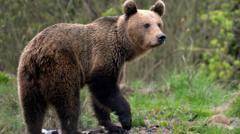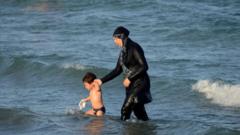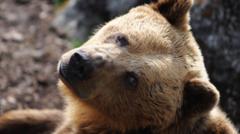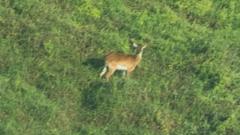On Tuesday morning, a motorcyclist was killed in a bear attack while stopped at a scenic area along Romania's Transfagarasan road. Authorities reported that the bear dragged the victim down an 80-meter ravine, and he was found already deceased by rescue workers. Ion Sanduloiu of the Arges County Mountain Rescue Service highlighted the extreme severity of the injuries sustained, despite the victim wearing protective gear and a helmet. The incident occurred next to a sign warning visitors not to feed the bears, underscoring the risks associated with human encounters with wildlife.
Tragic Bear Encounter Claims Life of Motorcyclist in Romania

Tragic Bear Encounter Claims Life of Motorcyclist in Romania
A horrifying bear attack in Romania's picturesque mountains has resulted in the tragic death of a motorcyclist, raising concerns about human-wildlife interactions.
Currently, the bear involved in the incident has not been euthanized, and an investigation is ongoing. Romania houses the largest brown bear population in the European Union, with recent studies estimating numbers between 10,400 and 12,800, prompting discussions on population management and coexistence strategies. Former environment minister Mircea Fechet expressed concerns regarding the overabundant bear population and advocated for regulatory changes allowing local authorities to act more swiftly in managing wildlife threats.
Gabriel Paun, of the wildlife protection NGO Agent Green, criticized the country’s wildlife management practices, labeling the bear attack as a result of a systemic failure that includes tourists' dangerous habits of interacting with wildlife, inadequate local law enforcement, and insufficient governmental oversight. He emphasized that climate change, habitat destruction, and human activity further threaten the bear population.
As discussions ensue regarding deterring tactics, Sanduloiu suggested imposing stricter penalties for those who feed wild bears in an effort to prevent future fatalities. The episode has ignited a broader conversation on the balance between conservation efforts and the safety of both the public and wildlife in Romania’s natural landscapes.
With the increase in human-bear encounters, the significance of implementing better preventative measures has never been clearer. The tragic incident serves as a stark reminder of the challenges associated with living in proximity to nature.
Gabriel Paun, of the wildlife protection NGO Agent Green, criticized the country’s wildlife management practices, labeling the bear attack as a result of a systemic failure that includes tourists' dangerous habits of interacting with wildlife, inadequate local law enforcement, and insufficient governmental oversight. He emphasized that climate change, habitat destruction, and human activity further threaten the bear population.
As discussions ensue regarding deterring tactics, Sanduloiu suggested imposing stricter penalties for those who feed wild bears in an effort to prevent future fatalities. The episode has ignited a broader conversation on the balance between conservation efforts and the safety of both the public and wildlife in Romania’s natural landscapes.
With the increase in human-bear encounters, the significance of implementing better preventative measures has never been clearer. The tragic incident serves as a stark reminder of the challenges associated with living in proximity to nature.





















